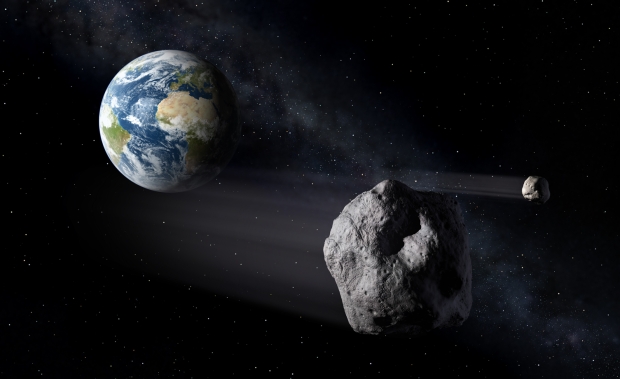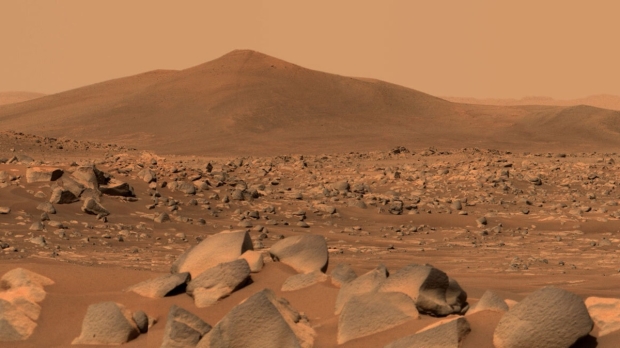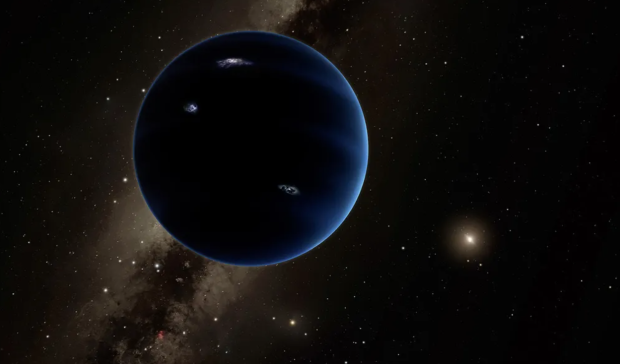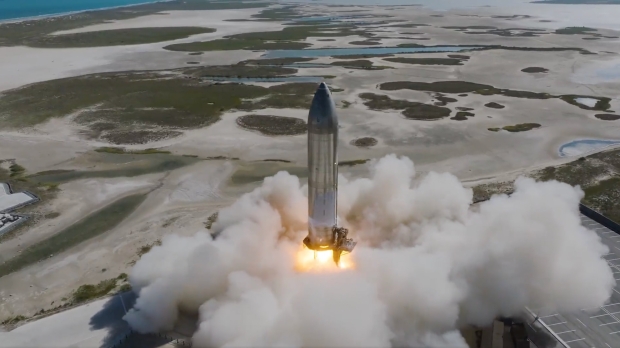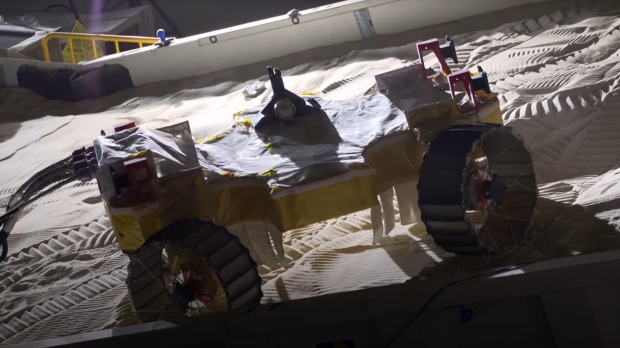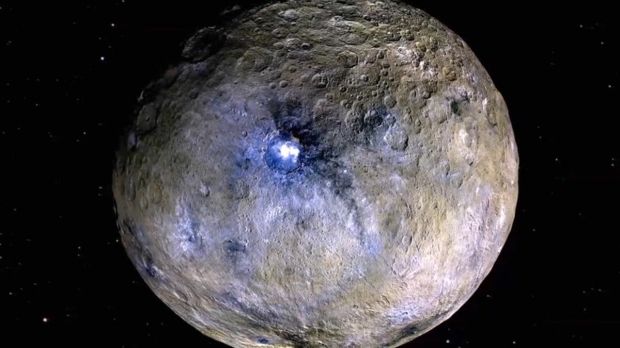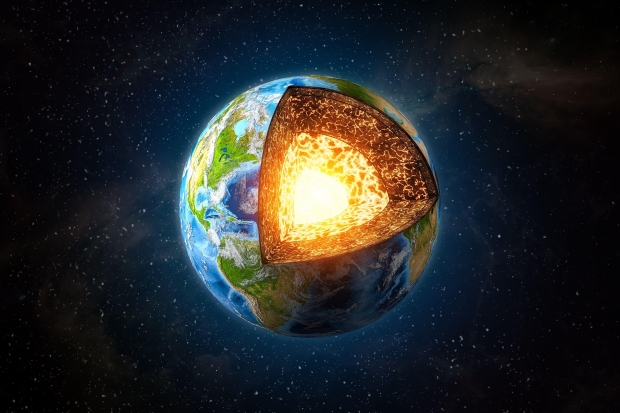Science, Space, Health & Robotics News - Page 29
NASA reveals its major statistical gap in knowledge for potential asteroid threats
NASA has taken to its website to share a new infographic that reveals a bunch of statistics regarding near-Earth asteroids (NEOs).
The space agency explains that any comet or asteroid that is 32 feet in diameter and orbits within 30 million miles of Earth is defined as an NEO. With that in mind, the above graphic states that NASA has identified 32,412 near-Earth asteroids of various sizes, and of that total, it has found 853 asteroids bigger than 3,280 feet in diameter. While these numbers seem positive, there is also a major red flag that should be highlighted.
Of the 10,541 near-Earth asteroids NASA has found that are larger than 459 feet in diameter, it still estimates there are 14,000 left to be found, which means the space agency believes it has found less than half of the total number of asteroids greater than 459 in diameter. These asteroids are capable of wiping out an entire city if one were to collide with Earth. More alarmingly, NASA's graphic states it still expects to find another 50 asteroids greater than 3,280 feet in diameter.
Scientists discover new way to create oxygen on Mars
A specific type of bacteria that lives in the strangest places on Earth may be the answer to providing a sustainable oxygen supply to colonists living on the surface of Mars.
NASA, along with a select few private companies, are working toward the ultimate goal of creating a colony on the surface of the Red Planet. There are many problems that need to be overcome for this dream to become a reality, one of which is the lack of oxygen within the Martian atmosphere. A team of researchers has proposed using plants with a biocoating of a specific bacteria called Chroococcidiopsis Cubana, which consumes CO2 and produces oxygen.
The team created the biocoating by taking all of the necessary prerequisites for the bacteria to survive on the surface of Mars while also making sure the biocoating was durable and porous enough for cell transportation within the bacteria. The team monitored the new biocoating for 30 days and measured oxygen output, and found the paint-containing bacteria produced 0.4 grams of oxygen per day, which remained consistent over the entire month. For every 35 ounces of paint, the paint can produce 400 grams of oxygen.
Continue reading: Scientists discover new way to create oxygen on Mars (full post)
Scientists discover evidence Planet Nine isn't a planet, but something else
For many years, there have been theories circulating about Planet Nine, a mysterious planet that orbits the Sun once every 10,000 or 20,000 years, and now physicists are suggesting it may not even be a planet at all.
A new study has looked at the Planet Nine data acquired in the past and applied the gravitational model called Modified Newtonian Dynamics (MOND), which is a model that enables researchers to accurately understand the gravitational behavior of galaxies. Typically, this model isn't used on smaller scales such as Planet Nine, but physicists Katherine Brown of Hamilton College and Harsh Mathur of Case Western Reserve University, decided to give it a try, and the results have seemingly thrown a new contender into the mix for the origin of Planet X.
Researchers have theorized Planet Nine's existence through gravitational anomalies that were traced back to strange orbital clustering in the outer Solar System. Within that region are large quantities of small icy rocks, which were clumping together, suggesting they were being influenced gravitationally by a large astronomical body, such as a planet.
SpaceX shares video of Starship being fired up ahead of second orbital launch
Ahead of SpaceX's highly anticipated second orbital test flight with Starship, the space fairing company has fired up one of the Raptor engines powering the launch vehicle.
SpaceX is currently preparing for its second orbital launch attempt with the world's largest and most powerful rocket, Starship. The Elon Musk-led company set out to construct a rocket that is capable of traveling to the surface of the moon, and Mars can carry 100 tons of cargo for basic single-trip colonization of regions and is overall rapidly reusable.
In theory, SpaceX has achieved this with its design, but it has yet to reach space, and during the last test, Starship essentially erupted into flames, severing communications with HQ, which ultimately resulted in it having to be detonated. Ahead of the second orbital attempt, SpaceX has fired up one of its 39 Raptor engines, 33 for the Super Heavy booster and 6 for Starship. The single-engine static fire test was to demonstrate a flight-like startup for a Starship deorbit burn.
NASA's new moon rover overcomes lunar 'obstacle course'
NASA has announced that its new lunar rover named VIPER has completed an "obstacle course" simulating the lunar environment - a key step in the development of the rover slated to explore the lunar south pole.
VIPER, or the Volatiles Investigating Polar Exploration Rover, has completed an obstacle course simulating the lunar terrain it will encounter when it lands on Mons Mouton, a mountain located near the lunar south pole. More specifically, the new rover will touchdown close to the western rim of the Nobile crater, where it will then begin its primary objective of documenting the southern lunar environment. Data from VIPER will then be used to dictate viable landing locations for future Artemis missions.
NASA has taken to its Ames Research Lab YouTube channel to showcase that VIPER has overcome some of the most common challenges it will encounter when it begins to scour the lunar surface. The small rover is seen successfully overcoming simulated fine lunar soil, quicksand-like soil, rocks, slopes, and much more. All of which are critical points of maneuverability. VIPER is expected to launch on the back of a SpaceX Falcon Heavy rocket sometime in November 2024.
Continue reading: NASA's new moon rover overcomes lunar 'obstacle course' (full post)
World's largest underwater telescope will hunt for spooky particles that are everywhere
One nation is building a "ghost particle" detector 3,500 meters, or 11,500 feet below the surface of the Western Pacific Ocean.
The nation behind the project is China, and engineers are going to be constructing what is called the Tropical Deep-sea Neutrino Telescope (TRIDENT), or Hai Ling (Ocean Bell) in Chinese. The massive telescope will be anchored to the seabed and be tasked with searching for neutrinos, or "ghost particles". Notably, approximately 100 billion neutrinos pass through each square centimeter of your body every second, but since they have nearly zero mass and no electrical charge, they don't interact with any other types of matter.
So, why would researchers want to observe them? Researchers can trace some neutrinos back to their origins, which can be billions of light-years away in distant regions of the universe where galaxies collided, stars went supernova, etc. Due to their speed and lack of interaction with other matter, neutrinos are quite difficult to detect. However, when they pass through water or ice, they can create a particle called a muon that produces a flash of light.
Scientists discover evidence on a dwarf planet near Mars that'll help find alien life
A newly published study has pointed to a dwarf planet located near Mars that may contain some answers in our quest to discover life outside of Earth.
The dwarf planet that researchers are focussing on is called Ceres and is located between Jupiter and Mars. According to the study that was discussed at the Geological Society of America's GSA Connects 2023 meeting earlier this month, Ceres has an abundance of organic matter present on its surface, and follow-up observations of the dwarf planet may garner information regarding the potential of life existing outside of Earth.
The presence of organic matter was first detected back in 2017 from observations by the Dawn spacecraft, but researchers have recently made more observations, leading to the conclusion that there is more organic matter present than initially anticipated. This discovery has further pushed the researchers behind the study to call for more frequent and in-depth observations of Ceres.
Apple Podcasts expands integration with Alexa by bringing the service to more countries
Apple and Amazon are working together to bring Apple Podcasts to many more countries around the world via Amazon's devices that support its virtual assistant.
The partnership between Apple and Amazon regarding Apple Podcasts being on Amazon Echo devices began in 2019, and since then, both companies have slowly been adding more and more countries to the list of countries with support for Apple's podcasting services. This integration was only made available in select countries at first, but now Apple has made Apple Podcasts available to more than 40 different regions through Echo devices.
MacRumors reported that Apple updated its support page on its website, stating that Apple Podcasts on Alexa is now available in many more countries. Notably, this integration works on Amazon Echo speakers or an Amazon Fire TV, which has Alex built-in. Users will need to request Alexa play a podcast specifically from Apple Podcasts for it to work.
Scientists discover Earth's core may be leaking out onto its surface
A group of researchers have discovered a rare isotope that suggests that Earth's inner core may be leaking lava onto the surface.
The claims come from a newly published study in the scientific journal Nature, which details the discovery of helium-3, helium-4, and a third isotope from ancient lava flows in Baffin Island, the largest island in Canada and fifth largest in the world. The team suggests Earth's inner core is leaking after they discovered the element helium-3, an extremely rare element that is typically traced back to the beginning of the universe or the Big Bang.
Researchers believe some helium-3 is trapped within Earth's inner core during the planet's early stages of formation. It should be noted that researchers have known for quite some time that samples from Baffin Island contained helium-3, but more recent research corrected the estimation on just how much, while also further suggesting that lava flows containing this element are coming all the way from the planet's inner core.
Continue reading: Scientists discover Earth's core may be leaking out onto its surface (full post)
Astronaut snaps epic photograph of the recent solar eclipse from space
The annular solar eclipse happened on October 14, and observers around the world looked up in wonder at the astronomical phenomenon.
The "ring of fire" solar eclipse was seen by millions around the world, with many other people only being able to see a partial solar eclipse due to their location on the planet. However, from Oregon and down through Central and South America, millions were able to capture the event in all its glory. Despite the location of 250 miles above the surface of Earth, astronauts aboard the International Space Station (ISS) were in the partial solar eclipse group.
NASA astronaut Jasmin Mogbeli snapped a photograph of the event, which was then posted on X by NASA's Marshall Space Flight Center the following day. For those who don't know, a solar eclipse is an astronomical phenomenon that occurs when the moon passes between the Earth and the sun with perfect alignment. The moon blots out the majority of the light produced by the sun, and depending on where you are located on Earth, the only part of the sun still visible is an outer glowing ring - the ring of fire.
Continue reading: Astronaut snaps epic photograph of the recent solar eclipse from space (full post)


